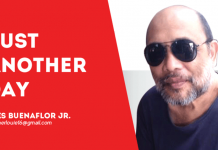
PLASTIC pollution continues to choke our coastlines—this is the troubling reality emphasized by the recent International Coastal Cleanup (ICC) in Western Visayas. Thousands of plastic beverage bottles, grocery bags, and food wrappers were collected, reflecting our over-reliance on single-use plastics.
While cleanups like this also reveal a critical gap in our approach: we are not doing enough to change public attitudes and behaviors toward plastic use.
But if we are to reduce our plastic consumption and properly manage waste, we must start with the way people think about their environmental impact. Schools, barangays, and communities need to play an active role in reshaping public attitudes toward plastic use, waste disposal, and environmental stewardship.
Education is the most powerful tool for creating long-term behavioral change. While laws and policies can regulate plastic use, they are often ineffective without public support and understanding. To achieve lasting results, we must instill a sense of environmental responsibility, starting at a young age.
Schools in Western Visayas are uniquely positioned to drive this change. Through environmental education programs, students can learn the impact of plastic pollution on marine life, ecosystems, and human health. They can also be taught practical habits, such as reducing single-use plastics, recycling, and proper waste disposal. By integrating these lessons into the curriculum, we can nurture a generation that is conscious of its environmental footprint.
But education must go beyond the classroom. Communities need to be involved. Barangay leaders and local organizations can host workshops and seminars, teaching residents about sustainable alternatives to plastic and the importance of proper waste management. Clean-up events like ICC Day should be complemented by year-round educational campaigns that focus on reducing plastic at the source.
Western Visayas has seen the effects of plastic pollution firsthand. During this year’s ICC, more than 10,000 kilograms of trash were collected along the region’s coastline, with plastic waste topping the list. This is not just a regional issue — it’s a global one — but Western Visayas has the opportunity to lead by example.
One of the biggest barriers to change is the deeply ingrained convenience culture around plastic. People use plastics because they are cheap, easy, and readily available. However, if more people were aware of the long-term consequences — how plastics take hundreds of years to decompose, how they kill marine life, and how they can even enter our food chain — more would likely shift toward sustainable alternatives.
We must make this knowledge common. Schools, communities, and local governments should work together to amplify this message through social media campaigns, public service announcements, and community engagement. Small actions, such as using reusable bags and containers or avoiding plastic straws, need to become part of everyday life. It starts with education and awareness, but it ends with everyone making conscious choices to protect the environment.
Changing public attitudes toward plastic use will take time, but education is the foundation on which sustainable behavior can be built. Western Visayas, with its strong community spirit and commitment to environmental stewardship, can become a model for others. Through environmental education in schools, promoting awareness in communities, and fostering a sense of responsibility, we can turn the tide against plastic pollution.



